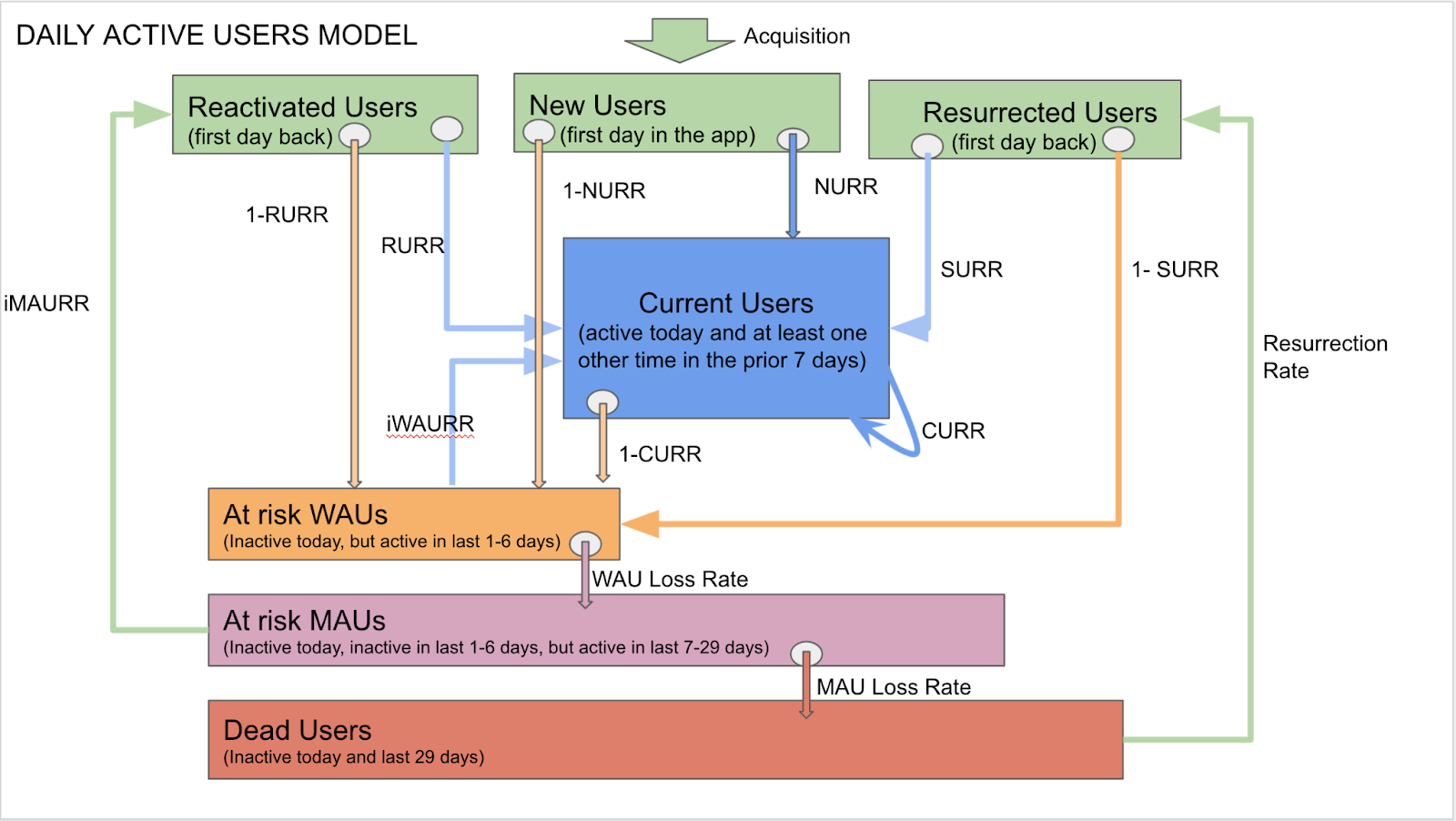Smart thinking and a learning culture behind Duolingo's growth
This edition of Lenny Rachitsky's newsletter is worth a deep dive to understand the level of granular control over experimention they're working with to build engagement at Duolingo.

This edition of Lenny Rachitsky's newsletter is worth a deep dive to understand the level of granular control over experimention they're working with to build engagement at Duolingo. If you, or someone close to you is a Duolingo user, you know that they're walking a fine balance between push and fun that is worth understanding if your challenges require some level of activating people.
The image above shows a mutually exclusive, comprehensively exhaustive categorisation of states of engagement. This model works for them to engage members on a daily basis, but the logic applies even if your frequency of engagement is different. Effectively what they're doing is being very explicit about how a member's experience should change depending on how currently engaged they are. So for example, someone who hasn't logged in, and has lost their streaks (ongoing periods of active learning intended to drive loss aversion), has a very different experience to someone that logged in yesterday.
What's not captured so explicitly by the diagram is the experimentation work running behind these metrics to continuously adapt and improve the overall outcome. I was also impressed by the development of insights over time, so that early failures that were driven by execution weren't dead-ends, but learning experiences.
This observation is as applicable to online banking as it is to language learning. Think how different your needs (and the experience needed to address them) are when you check your balance or make a payment versus applying for a mortgage. Understanding and designing for the appropriate level of engagement, rather than constantly demanding more or giving everyone the same, is one way through the engagement fatigue we all experience every day.

